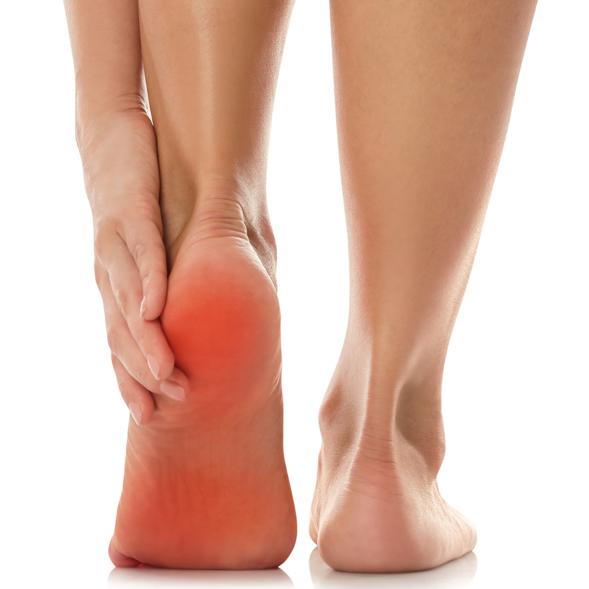Blog
Plantar fasciitis
Plantar fasciitis is a common foot condition that causes pain and discomfort in the heel and arch of the foot. It is caused by the inflammation of fibrous structure in sole of the foot called plantar fascia. This condition affects a large number of people, particularly athletes and runners, and can be very debilitating if not properly managed.
Signs & Symptoms:
The most common symptom of plantar fasciitis is pain in the bottom of the foot, particularly in the heel area. This pain is often most severe in the morning, when you take your first few steps after getting out of bed. The pain may also be aggravated by standing for long periods of time, walking, or running.
Other symptoms of plantar fasciitis may include:
- Stiffness in the foot
- Tenderness or swelling in the heel
- Pain that worsens over time

Causes:
There are several factors that can contribute to the development of plantar fasciitis, including:
- Overuse or repetitive strain on the plantar fascia
- Flat feet or high arches
- Tight calf muscles or Achilles tendons
- Obesity or sudden weight gain
- Weakening of leg muscles
- Poor footwear or inadequate arch support
- Improper running form
Diagnosis:
If you suspect you have plantar fasciitis, it's important to see a healthcare professional for confirming the diagnosis. Your healthcare professional will take a medical history and conduct a physical examination of your foot. They may also order imaging tests, such as an X-ray or MRI, to rule out other conditions that may be causing your symptoms.
Treatment:
Treatment for plantar fasciitis typically involves a combination of ice therapy, stretching exercises, rest and pain relief. In more severe cases, other forms of medical intervention may be necessary.
Taking break from aggressive or competitive sport activities is most imperative as it allows the plantar fascia to heal and reduce inflammation along with ongoing treatment. This may involve avoiding activities that aggravate the condition, such as running or jumping, or wearing supportive footwear with adequate arch support.
Stretching exercises can also be beneficial for relieving pain and stiffness associated with plantar fasciitis. These exercises can help to improve flexibility in the calf muscles and Achilles tendons, which can help to reduce strain on the plantar fascia. Examples of stretching exercises include calf stretches, towel stretches, and plantar fascia stretches.
Pain relief may also be necessary to manage the symptoms of plantar fasciitis. This may involve taking over-the-counter pain medication, using ice or heat therapy, or using orthotic devices such as heel cups or arch supports.
Physical therapy is a major, scientifically proved treatment form beneficial for treating plantar fasciitis, particularly in cases where conservative treatment measures have been ineffective. This may involve hands-on treatment techniques such as muscle release, bone mobilization or other forms of intervention to reduce pain along with exercises to strengthen the foot and ankle.
Prevention:
There are several steps you can take to reduce your risk of developing plantar fasciitis, including:
- Wearing supportive footwear with adequate arch support
- Avoiding high-impact activities that place excessive strain on the feet
- Maintaining a healthy weight
- Stretching regularly to improve flexibility in the calf muscles and Achilles tendons
- Using orthotic devices such as heel cups or arch supports
- Avoiding sitting and standing continuously for a long time

